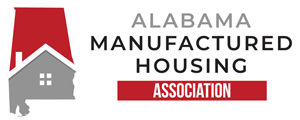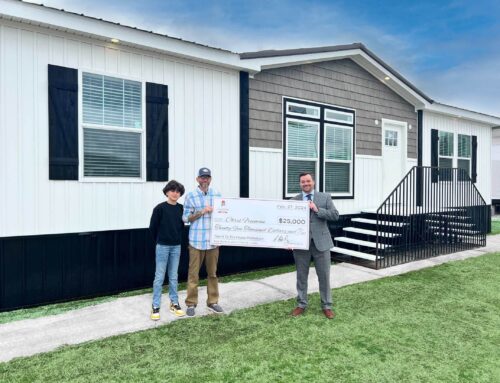
How Manufactured Home Anchoring Systems Work
Manufactured homes are protected against strong winds, storms, and natural elements using anchoring and tie-down systems. Here’s how they work.
Because a manufactured home is constructed offsite and then transported, delivered, and adhered to its permeant location, the foundation of the home requires a special installation system to ensure the structure’s strength, longevity, and protection. You might have heard myths involving manufactured homes and tornadoes – some of which may have even turned you off from considering purchasing a manufactured home. But truth be told, with professional installation and proper maintenance, a manufactured home is just as dependable as any site-built home.
No matter where you live, special tie-downs and anchors are needed to keep your manufactured home stable and secure. The type of foundation (pier and beam, concrete slab, etc.) that your manufactured home requires determines the type of anchoring system your home builder will use. Before you start the job, you should understand why this protection system is necessary, and know the basics of manufactured home anchoring systems.
The Necessity of Anchoring Systems
Oliver Technologies, Inc., one of America’s leading manufacturers and suppliers of manufactured housing foundation products, says a strong foundation is the key to keeping manufactured homes both strong and durable.
Compared to site-built homes, manufactured homes are lightweight structures. Traditional models tend to feature flat sides and ends and are built on frames. Almost all manufactured homes are elevated, situated on top of some sort of pier or foundation system, as previously mentioned. Strong, storm-force winds have the possibility of getting under the home and lifting it from the frame. In addition, the wind passing over the top of the manufactured home can create an uplift force. Anchors and tie-downs that are fixed to a foundation are necessary for keeping manufactured homes in place during storms and high winds.
Choosing a Home’s Foundation
Different types of manufactured homes require different foundations. The plant that manufactures your home, using in-house engineers, will determine which foundation system is best for the home and what installation method would be most successful and affordable. Factors that go into making that decision include:
- The wind zone your home is located in
- The dimensions of your home
- The spacing between the beams of your home’s frame
- The soil grade beneath your home
- The height from the ground anchor to the steel strap attachment point
The Workings of Manufactured Home Anchoring Systems
Tie-Downs
Virtually all newer-model (modern) manufactured homes have increased structural strength and are secured with anchoring straps that are attached to steel frame rails called frame anchors. These tie-downs exist beneath the home’s structure and are invisible at eye level. Doublewides are also secured with frame anchors.
Types of Anchors
The type of anchor used for your home will depend on the soil condition of which the home will sit on. You’ll find anchors available for different types of soil conditions. Soil classifications usually include rock, hardpan, heavy, sandy gravel, heavy sand, silty gravel, clayey gravel, clay, silty clay, clayey silt, uncommitted fill, or peat/organic clay.
Anchor types include but are not limited to auger, rock, and drive anchors. Anchors will usually be installed by inserting a metal bar through the top of the anchor for added leverage or with a machine designed for this purpose. The tie-down must be connected to the anchor with a system that allows for adjusting the tension. It must also be weather resistant and strong enough to support as much weight as the anchor and tie-down.
Anchor Installation & Maintenance
An installer is required to follow these steps to ensure the proper installation of an anchoring system of your manufactured home:
- Ensuring the manufactured home is completely level prior to anchoring it to the ground.
- Determining the required number of anchors recommended for the home’s wind zone.
- Working with a grounds inspector to determine the surrounding area’s soil type. The soil type will determine the type of anchor that will be used to secure the home.
- Selecting the appropriate hook-up and tension device to attach to the foundation anchor.
- Marking and clearing the location of electric, cable, gas, water, sewer, and phone lines on the ground before installing anchors.
- Installing the anchor. For a vertical tie-down, the anchor will be installed vertically. For a frame/diagonal tie-down, the anchor can be installed to the same angle as the tie-down. The anchor can be installed vertically if you also install a stabilization device to keep the anchor from moving sideways. A stabilization device might also be attached to the top of the anchor and buried in the ground.
- Adjusting the tension to the appropriate strength.
Once the manufactured home is safe and secure – and deemed livable by all HUD and safety codes – the anchoring system should be set. But the work doesn’t end there. Due to natural wear and tear, the system must be inspected for safety and surety every five to 10 years. It is important to do so to maintain the upkeep and overall protection of your manufactured home.
For more information on manufactured home safety, maintenance, and general information, check out the additional resources on the Alabama Manufactured Housing Association website.






